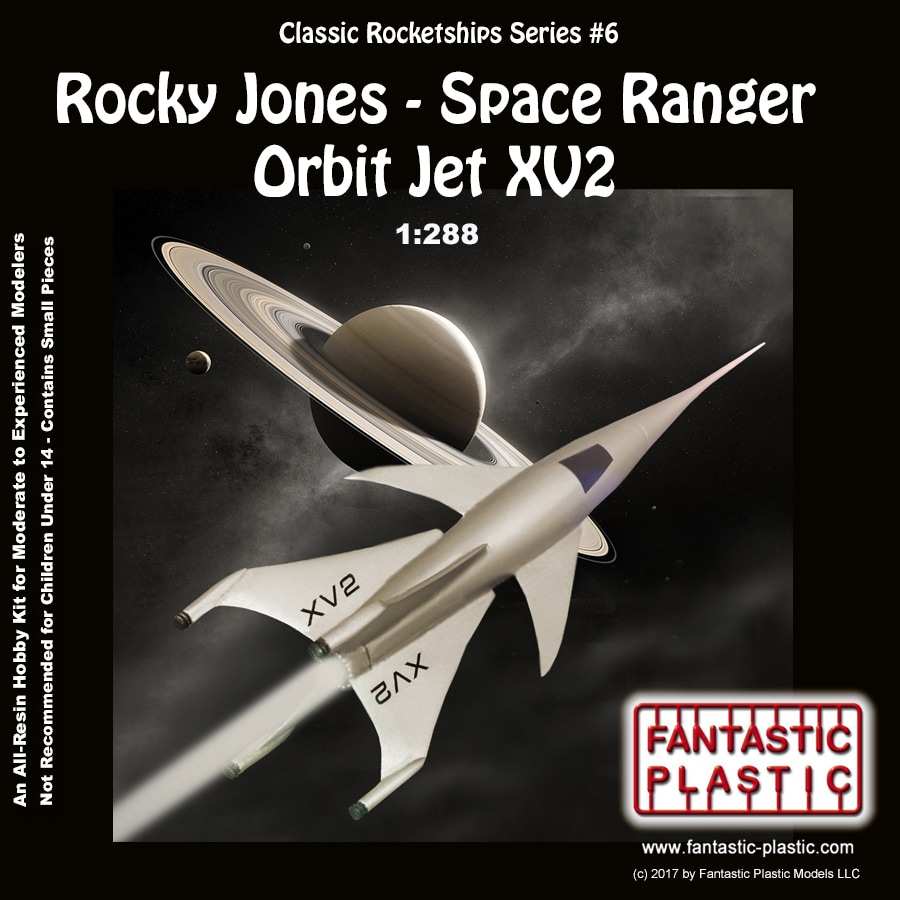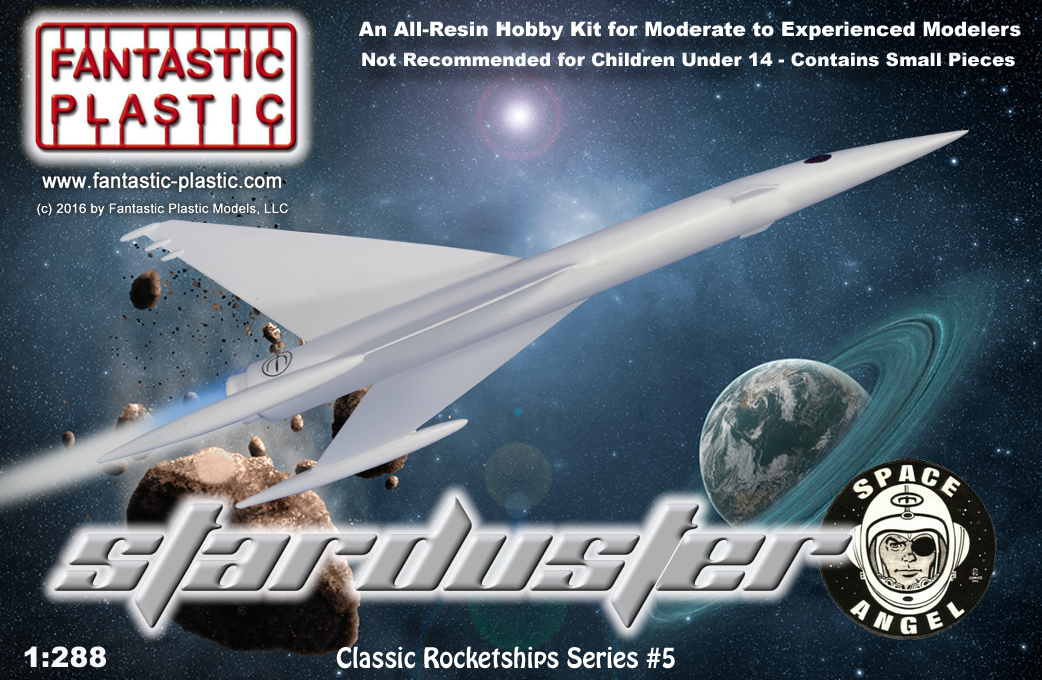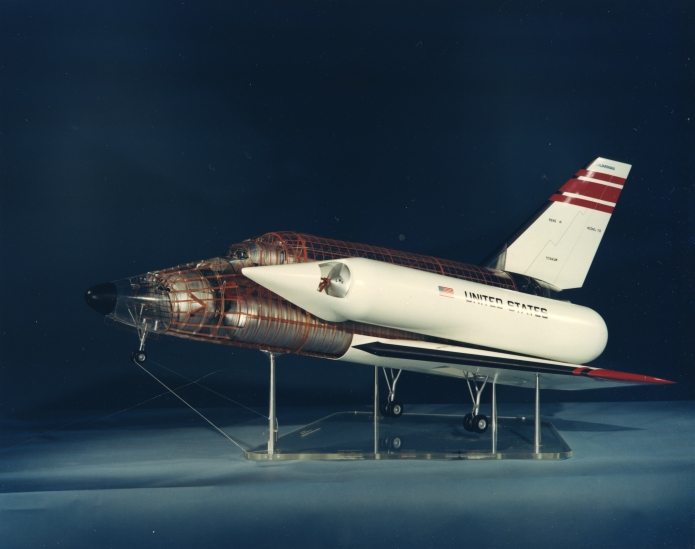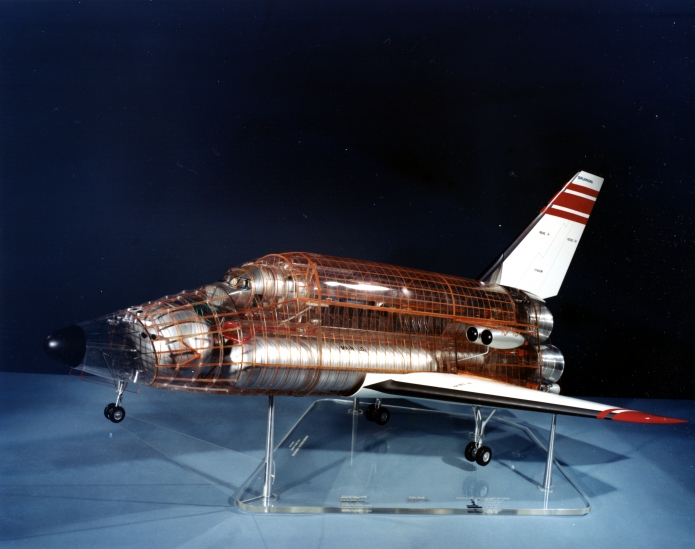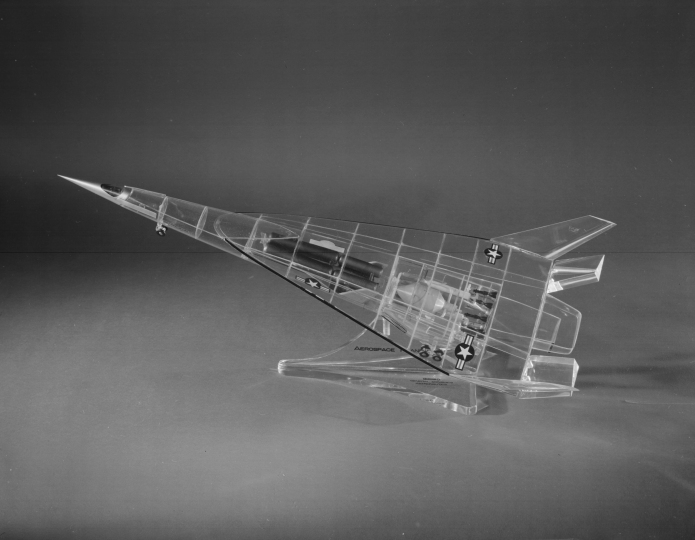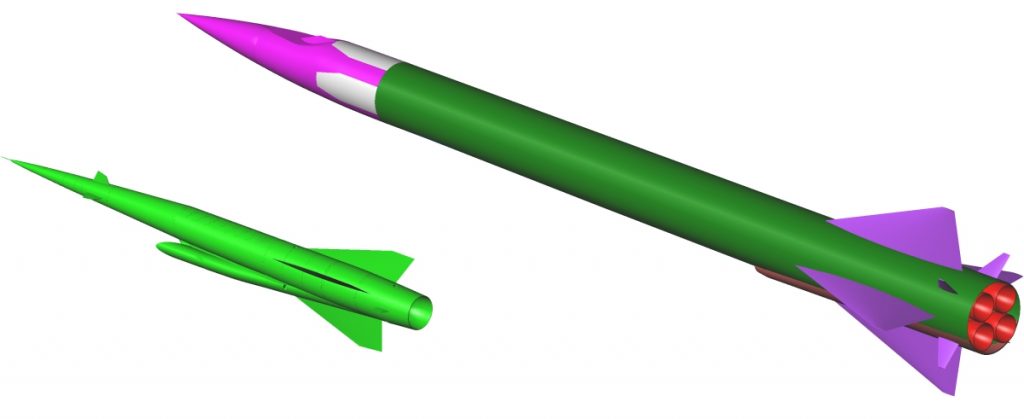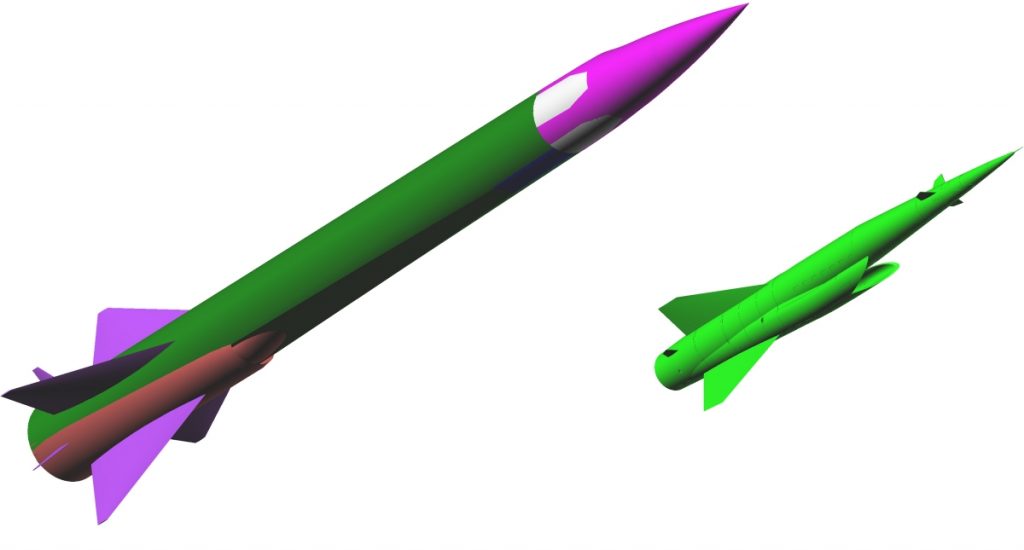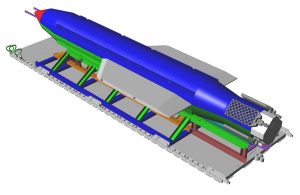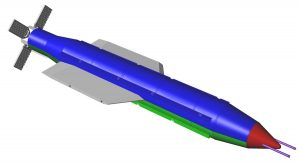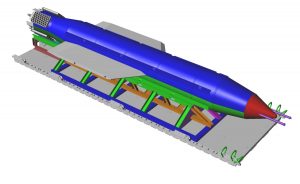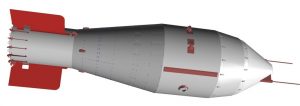The Blade Runner “Blaster” water pistol I mentioned back in April is now available. When originally announced, it was supposed to cost about $12… and if you’re in Japan, that’s about right. But in the US, it costs about five times as much, at least so far. Numerous copies on eBay, one on Amazon.
Looks reasonably accurate. Not sure about the charging handle on the right side, but I suspect it would only require minimal effort to paint and otherwise dress up this piece into a pretty good replica.

The GBU-43A/B “Massive Ordnance Air Blast (aka Mother Of All Bombs)” is dropped from a C-130. It sits on an aluminum cradle and rolls out the back of the plane, pulled out by a parachute. The question is: how does that chute work? If you watch the video below, you can see the parachute pack “drop” from the upper part of the doorway. This looks like either the pack was attached to the ceiling of the cargo bay (or the inner portion of the aft door that hinges upwards) and simply dropped, or perhaps it’s hurled out by a catapult of some type. Does anyone know? I’ve looked but so far I’ve failed to find any photos, diagrams or videos depicting the setup prior to deployment.
The H-33 orbiter was designed in early 1971 to be launched atop a reusable manned flyback booster, a truly giant supersonic vehicle. The orbiter itself was similar in configuration to the Shuttle Orbiter as actually built, but it differed in that it had internal liquid oxygen tanks and expendable external hydrogen tanks, rather than a single large ET. The NASM has some good photos of a display model of the full system.
The H-33 was a popular design, at least at Grumman. A number of display models were made of it, including this detailed “cutaway” model made – seemingly – of plexiglas.
I have uploaded the full-rez images to the 2017-08 APR Extras Dropbox folder, available to all $4 and up APR Patrons. If interested, wander on by the APR Patreon and sign up. Lots of aerospace goodies available.
Eaglemoss sells a line of Star Trek ship display models; their list is now over 100, including not only the expected ships but also some pretty obscure ones. They cover all the series, including NuTrek… and soon, Discovery. Eaglemoss recently displayed 3D printed prototypes of the USS Discovery and USS Shenzhou, providing decent views of the new ships:
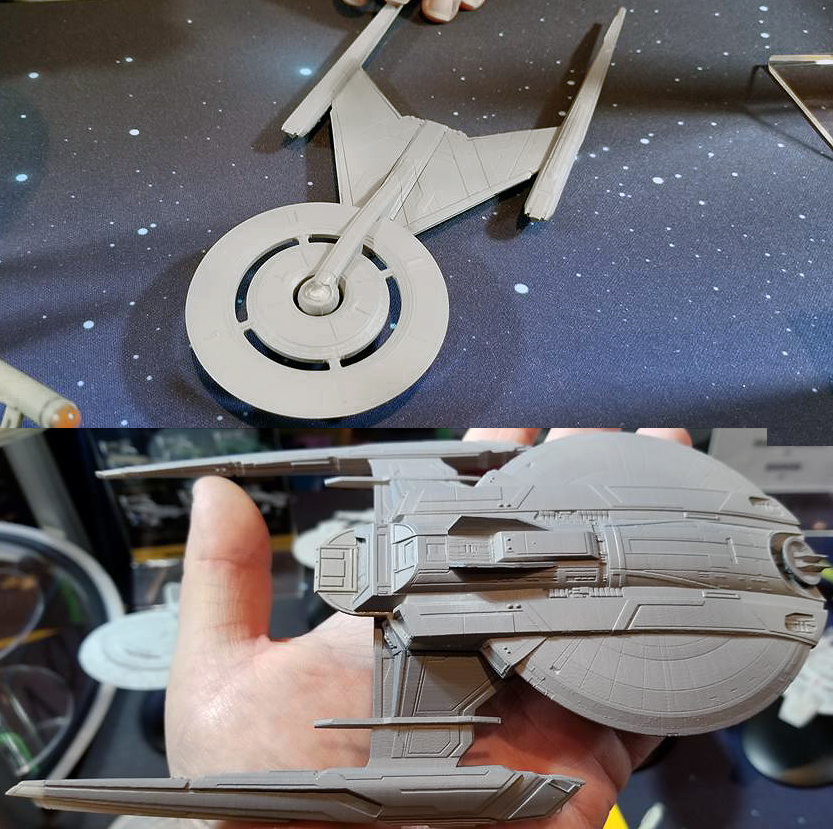
Comments:
- The Discovery looks pretty spiffy… except for those ridiculous cutouts in the primary hull.
- The Shenzhou looks just fine… for a post-Voyager ship. A pre-TOS design? Just no.
During the development of the Avro Arrow supersonic interceptor in the 1950’s, 3-meter-long scale models were lobbed to high speed atop solid rockets. The models were shot into Lake Ontario, where they sank and were lost to history. However, it looks like someone is goign to make an effort to find and recover them:
New Search For Avro Arrow Flight Models Lost 60 Years Ago in Lake Ontario Has Begun
I suspect if the models are found, they’ll be found in itty bitty bits. Smacking into water at Mach 1 is rarely good.
Around 1960, the USAF had high hopes for the development of ASP: “AeroSpace Plane.” ASP was a program to develop an airbreather one- or two-stage-to-orbit spaceplane. The first stage would use some form of Liquid Air Cycle Engine; the inlet would be actively cooled by the liquid hydrogen fuel so that the incoming air would be condensed to liquid, which would allow the liquified air to be stored and fed into high chamber pressure rocket engines. ASP was extremely ambitious, and obviously – since no airbreathing system has made it to orbit (not counting simple turbojet-powered aircraft carrying otherwise conventional rockets such as Pegasus) – it did not work. A fair chunk of change was spent on the concept, but it faded away after a few years. The basic idea of ASP would arise a quarter century later with NASP, to similar levels of success.
A good, well-illustrated article on ASP was published some time back in issue v2N5 of Aerospace Projects Review.
Most of the known ASP designs were produced by Convair. It seems that Convair jumped into the program with both feet, producing not only detailed diagrams of a whole range of vehicles but also artwork and display models. And the latter category included some beautiful see-through models made from Plexiglas. It shows some interior details such as the complex plumbing of the Liquid Air Cycle Engines, as well as the winged second stage tucked into the lower fuselage of the very large hypersonic first stage. In an era long before computer animation, models such a this would be very useful in illustrating complex concepts to customers and bosses.
I have uploaded the full-rez version of this photo to the 2017-07 APR Extras Dropbox folder, available to all APR Patrons at the $4 level and above. If you are interested in accessing these and other aerospace historical goodies, consider signing up for the APR Patreon.
The Pluto nuclear ramjet is often considered one of the crazier (or perhaps more accurately, “badass”) weapons systems ever considered by serious people. In short, it used a nuclear reactor as the heat source for an airbreathing ramjet; it would fly at a few hundred feet altitude at Mach 3 with nearly unlimited range. Several American aerospace corporations vied for the contract; LTV won the contract to build the airframe in 1961. The “Tory” nuclear ramjet was static ground tested with some success, but the program was cancelled in 1964.
Convair gave the concept considerable study from the beginning of the program in 1957 until at least 1961. Their “Big Stick” concept has been reasonably well known, but they had another idea that was somewhat further from the basic idea. It was mentioned in at least two briefings that I’ve come across; some amount of serious work was done on it, but the information I have is fragmentary. The concept was called simply the “Submersible Nuclear Ramjet.”
Pluto and Big Stick were unmanned cruise missiles. They would be launched from the ground with solid rocket boosters (some though was given to launching from ships, subs and aircraft) and would fly “grand tours” of the Soviet Union, spitting out a number of individual nuclear bombs. They would leave in their wake a line of ruin… the shockwaves from their passage would likely shake apart civilian structures, and the reactors would constantly spit out radioactive particles. At the end of the mission the missiles would crash into one final target.
But the Submersible Nuclear Ramjet would work a little differently. For starters… it was manned. There would be a crew on board throughout the mission.
Rather than starting off at some Air Force base, the Submersible Nuclear Ramjet would actually start off as a submarine, floating around on its own in the ocean. Propulsion would be provided by the nuclear reactor, serving as a “water ramjet” by heating seawater and expelling it. Feeding salt water, diatoms, kelp, fish and all the rest of the junk the ocean has to offer directly through a nuclear reactor seems a bit dubious.
When the order to begin an actual mission comes in, the propulsion system would be reconfigured from seawater-burning ramjet to seawater-burning rocket. The vehicle would expel stored seawater through the reactor, generating a large amount of thrust, enough to launch the craft vertically out of the water and up to high speed. The craft would then angle over towards the horizontal; the propulsion system would reconfigure once again, this time to an airbreathing nuclear ramjet. The vehicle would then fly a mission essentially similar to Plutos… low altitude, screamingly high speed, ejecting nuclear weapons as it goes. At the end of the mission, unlike Pluto it would *not* crash itself into one final target. Instead, the manned vehicle would return to secure waters and slow to subsonic speed. It would enter a vertical climb and slow to a stop; the ramjet would again reconfigure, this time back to rocket mode. Four drag brakes would deploy around the nose and the vehicle would back down into the water for a soft “splashdown.” It would of course land with nearly empty tanks, so it would be quite buoyant; until the tanks refill, it would likely sit tail-down in the water.
I’m going to try to find out more about this concept, but I have minimal hopes. I’ve gone all this time without hearing about it until just a few weeks ago.
Because why no, I’ve made a basic model of the concept. Complete accuracy is not assured… I have a top view and an inboard profile; as with a distressing number of concept aircraft diagrams, the views seem to conflict on things such as the cockpit canopy, and the inlet configuration is only partially shown. Still, it’s a really interesting concept.
If you’re interested in Pluto, take a look at Aerospace Projects Review issue V2N1. There is a very large, highly illustrated article on Pluto in that issue. If you are interested in the Submersible Nuclear Ramjet, keep an eye on US Bomber Projects… it will show up in the next issue or two.
The renders below show the Convair Submersible Nuclear Ramjet to scale with the LTV Pluto.
This is certainly one of the most oddball, whackadoodle ideas I’ve ever seen. And I want one.
I’ve been working away on the first several of hopefully a sizable series of CAD models that will be turned into 1/24 scale model kits. The theme of the series: large and entertaining bombs. This series of models will be produced by and available through Masterpiece Models.
The first model, which I’m very nearly finished working on, is the GBU-43/B Massive Ordnance Air Blast, a.k.a. MOAB, the “Mother Of All Bombs.” This one is to be made available not only in 1/24, but also 1/48 and 1/72 for use with available C-130 kits. Here are some renders of the CAD model. Colors indicate parts breakdown (subject to some revision):
The MOAB model will come with grid fin parts for display as either stowed or deployed. The cradle is also to be supplied.
The second model, which I’m less finished with, is the thermonuclear AN602 “Tsar Bomb,” designed for 100 megatons, tested at around 50. This one is likely to be released solely in 1/24 scale.
Other bombs currently planned include the BLU-82 “Daisy Cutter,” the Mk 17 hydrogen bomb (America’s heaviest nuke at 42,000+ pounds, yield of about 15 megatons) and the GBU-57 Massive Ordnance Penetrator.
What other Large Bombs would you like to see in 1/24 scale? The US Mk 41 (most powerful US nuke at 25 megatons)? The British Tallboy and/or Grand Slam? The US T-12 Cloudmaker (because Grand Slam was just too petite)? The Tarzon guided bomb? Feel free to make suggestions.
… that I mastered for Fantastic Plastic.
Horten XVIII-B flying wing, German WWII bomber project.
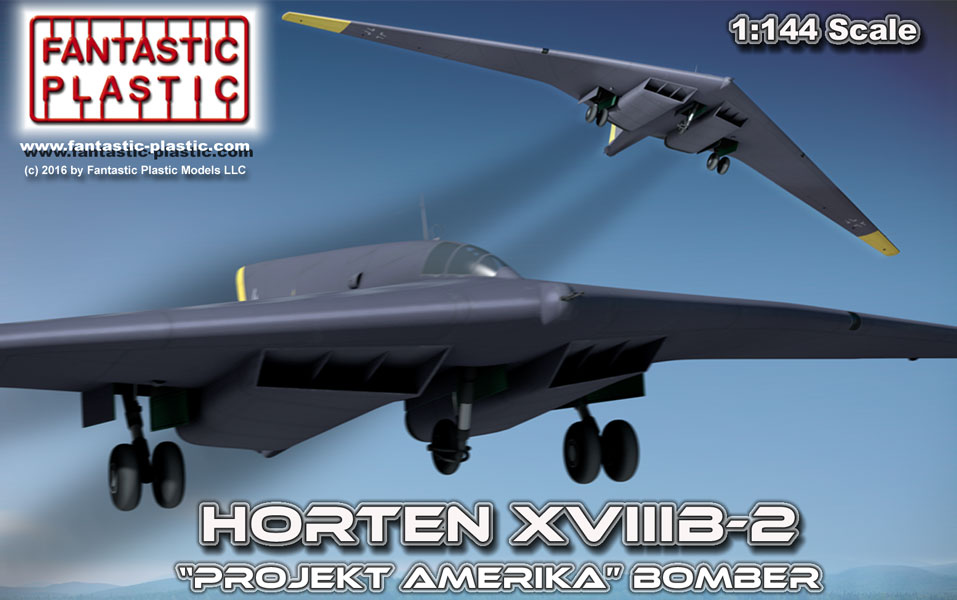
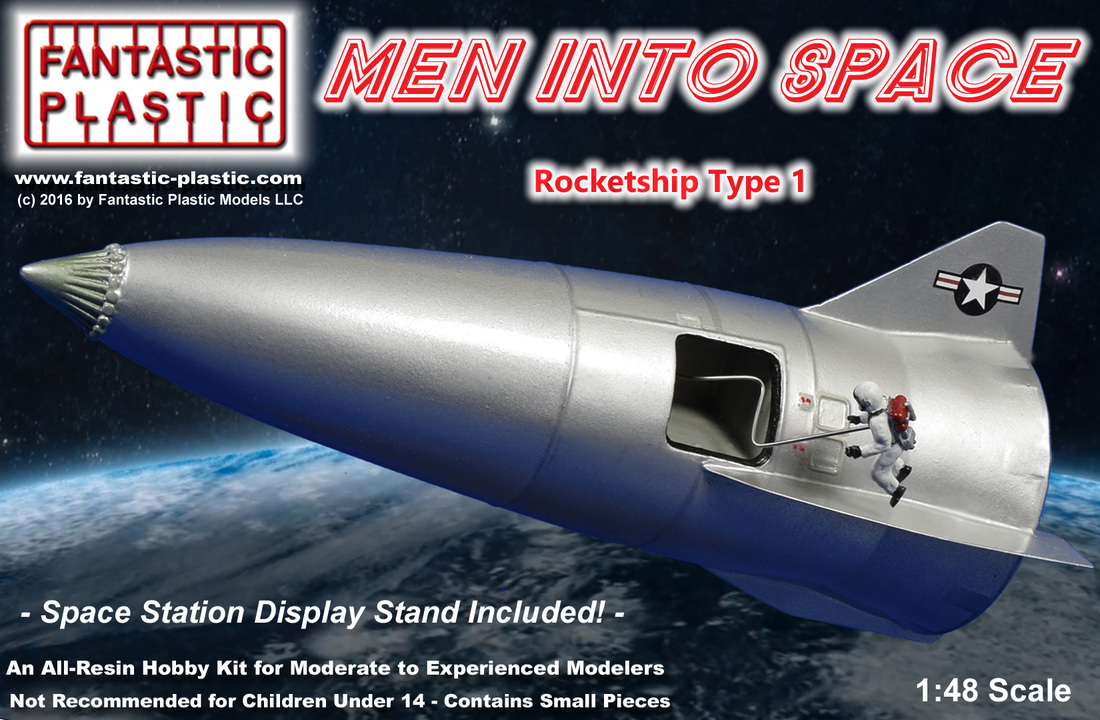
Rocky Jones Orbit Jet
